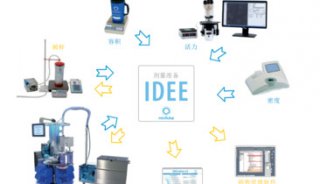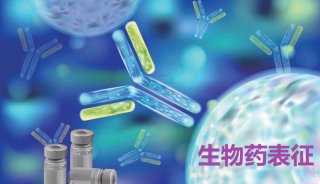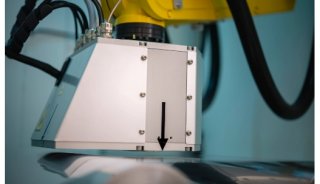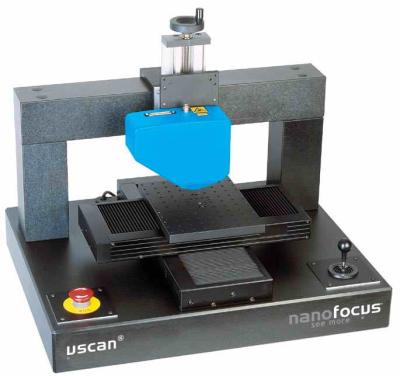Polyclonal Antibody Production
实验概要
Very useful for rapid and simple generation of antibodies for western blots, ELISA assays, and immunoprecipitation.
实验步骤
Rabbit Immunization
Initial Preparation:
Your antigen should at least have a molecular weight of 20 kDa (kilodaltons) for development of a strong immune response in animals. If it is a small protein, it can be linked to a larger protein by chemical methods or cloned and expressed as a fusion protein with a larger protein. If it is a peptide or small molecule, a carrier-hapten conjugate must be made. Purify your antigen well to obtain antibodies with good specificity.
Obtain at least two 6 week old New Zealand White rabbits and have them delivered to the Animal Resources Center. Don't put all your eggs in one basket by using only one rabbit. Allow them to get accustomed to their new environment for two weeks before the first pre-bleed.
Pre-bleed:
1. Calmly and gently place rabbit in a restrainer. If they are relaxed they bleed much easier.
2. With a razor blade, shave the top middle of the ear you wish to bleed, completely visualizing the large vein running down the center of the ear.
If you find it necessary, dilate the ear vein by rubbing xylene on it with a Q-tip.
3. Using a perfusion kit with a butterfly needle at one end and a rubber enclosed needle at the other, insert the butterfly needle in the vein. Immediately after blood is seen in the tubing, quickly insert the needle at the other end into the rubber cork of a 20 mL evacuated blood collection tube. This step works best with two people.
4. When you have the required amount of blood (1-5 mL is sufficient for a pre-bleed--for later bleeds take 20 mL), remove the needle and apply pressure to the wound. When the bleeding has stopped (~10 seconds), sterilize the ear with ethanol. If you used xylene, rinse two or three times with ethanol to remove it.
5. Remove the rabbit from the restrainer and place it in its cage.
6. Take the collected blood and place at 37°C for 30 minutes to inactivate complement.
7. Place the tube at 4°C overnight to clot.
8. Loosen the clot from the tube wall with a spatula and decant the blood into a plastic centrifuge tube. Centrifuge at 4°C 10,000g for 10 minutes.
9. Decant or pipet off the supernatant. This is your serum. Dispose of all blood waste in appropriate biohazardous containers.
Antigen Injection:
1. For injection of two rabbits, your antigen should be in 1 mL of a buffer such as phosphate buffered saline (PBS) or Tris that contains no chemicals harmful to the rabbit. 100 µg/rabbit of antigen is best, but you can use less and get good results.
2. Again for two rabbits, prepare RIBI (or Freund's) adjuvant by warming in a beaker of warm water, injecting 1 mL of your antigen solution into the adjuvant, and vortexing vigorously for 2 minutes to get a good suspension. Do not get adjuvant in your eyes, or anywhere else.
3. Calmly take the rabbit out of its cage, reassuringly petting it. There is no need for a restrainer. Place on a flat surface for the injection. With a 1 mL syringe, draw in 1 mL of your antigen/adjuvant solution. Four subcutaneous injections are done, two on the lower back and two on the thigh. To inject, rub the hair away from the injection site and sterilize with a squirt of ethanol. Pinch the skin and pull up slightly to pull the skin away from the muscle, insert the needle 1-2 cm at a 15 degree angle so as to not hit muscle, and inject 250 µL of your innoculum. After the required volume has been injected, let the needle remain in place for a few seconds, then pull out and gently rub the injection site so nothing leaks out. Repeat for all four sites and place the rabbit back in its cage. Repeat the process for the other rabbits.
4. Injections will be done every 4-6 weeks, with bleeds 7-10 days after each injection. Bleeds are performed identically to the pre-bleed, but obtain at 5. least 20 mL per rabbit, with 40 mL being the upper limit for an adult rabbit to prevent anemia.
Monitoring of Titer:
The quality of the antibodies in serum (humoral immune response) of the bleeds is monitored by indirect ELISA. Titer is defined as the dilution that gives you 1/2 the maximal absorbance of this assay.
Purification of Antibodies:
Although for many purposes it is not necessary to purify the antibodies away from other serum proteins, if desired this is best accomplished by Protein A Affinity Chromatography.




















